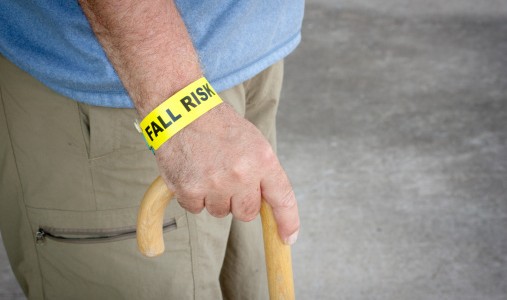Falls in the Elderly
/GEORGE F. FULLER, COL, MC, USA, White House Medical Clinic, Washington, D.C.
Am Fam Physician. 2000 Apr 1;61(7):2159-2168.
See related patient information handout on the causes of falls and tips for prevention, written by the author of this article.

Falls are the leading cause of injury-related visits to emergency departments in the United States and the primary etiology of accidental deaths in persons over the age of 65 years. The mortality rate for falls increases dramatically with age in both sexes and in all racial and ethnic groups, with falls accounting for 70 percent of accidental deaths in persons 75 years of age and older. Falls can be markers of poor health and declining function, and they are often associated with significant morbidity. More than 90 percent of hip fractures occur as a result of falls, with most of these fractures occurring in persons over 70 years of age. One third of community-dwelling elderly persons and 60 percent of nursing home residents fall each year. Risk factors for falls in the elderly include increasing age, medication use, cognitive impairment and sensory deficits. Outpatient evaluation of a patient who has fallen includes a focused history with an emphasis on medications, a directed physical examination and simple tests of postural control and overall physical function. Treatment is directed at the underlying cause of the fall and can return the patient to baseline function.
Elderly patients who have fallen should undergo a thorough evaluation. Determining and treating the underlying cause of a fall can return patients to baseline function and reduce the risk of recurrent falls. These measures can have a substantial impact on the morbidity and mortality of falls. The resultant gains in quality of life for patients and their caregivers are significant.
Epidemiology of Falls in the Elderly
From 1992 through 1995, 147 million injury-related visits were made to emergency departments in the United States.1 Falls were the leading cause of external injury, accounting for 24 percent of these visits.1 Emergency department visits related to falls are more common in children less than five years of age and adults 65 years of age and older. Compared with children, elderly persons who fall are 10 times more likely to be hospitalized and eight times more likely to die as the result of a fall.2
Trauma is the fifth leading cause of death in persons more than 65 years of age,3 and falls are responsible for 70 percent of accidental deaths in persons 75 years of age and older. The elderly, who represent 12 percent of the population, account for 75 percent of deaths from falls.4 The number of falls increases progressively with age in both sexes and all racial and ethnic groups.5 The injury rate for falls is highest among persons 85 years of age and older (e.g., 171 deaths per 100,000 white men in this age group).6
Annually, 1,800 falls directly result in death.7 Approximately 9,500 deaths in older Americans are associated with falls each year.8
Elderly persons who survive a fall experience significant morbidity. Hospital stays are almost twice as long in elderly patients who are hospitalized after a fall than in elderly patients who are admitted for another reason.9 Compared with elderly persons who do not fall, those who fall experience greater functional decline in activities of daily living (ADLs) and in physical and social activities,10 and they are at greater risk for subsequent institutionalization.11
Falls and concomitant instability can be markers of poor health and declining function.12 In older patients, a fall may be a non-specific presenting sign of many acute illnesses, such as pneumonia, urinary tract infection or myocardial infarction, or it may be the sign of acute exacerbation of a chronic disease.13 About one third (range: 15 to 44.9 percent) of community-dwelling elderly persons and up to 60 percent of nursing home residents fall each year; one half of these “fallers” have multiple episodes.14 Major injuries, including head trauma, soft tissue injuries, fractures and dislocations, occur in 5 to 15 percent of falls in any given year.15 Fractures account for 75 percent of serious injuries, with hip fractures occurring in 1 to 2 percent of falls.15
In 1996, more than 250,000 older Americans suffered fractured hips, at a cost in excess of $10 billion. More than 90 percent of hip fractures are associated with falls, and most of these fractures occur in persons more than 70 years of age.8 Hip fracture is the leading fall-related injury that results in hospitalization, with these hospital stays being significantly prolonged and costly.16 It is projected that more than 340,000 hip fractures will occur in the year 2000, and this incidence is expected to double by the middle of the 21st century.17
One fourth of elderly persons who sustain a hip fracture die within six months of the injury. More than 50 percent of older patients who survive hip fractures are discharged to a nursing home, and nearly one half of these patients are still in a nursing home one year later.18 Hip fracture survivors experience a 10 to 15 percent decrease in life expectancy and a meaningful decline in overall quality of life.
Most falls do not end in death or result in significant physical injury. However, the psychologic impact of a fall or near fall often results in a fear of falling and increasing self-restriction of activities. The fear of future falls and subsequent institutionalization often leads to dependence and increasing immobility, followed by functional deficits and a greater risk of falling

